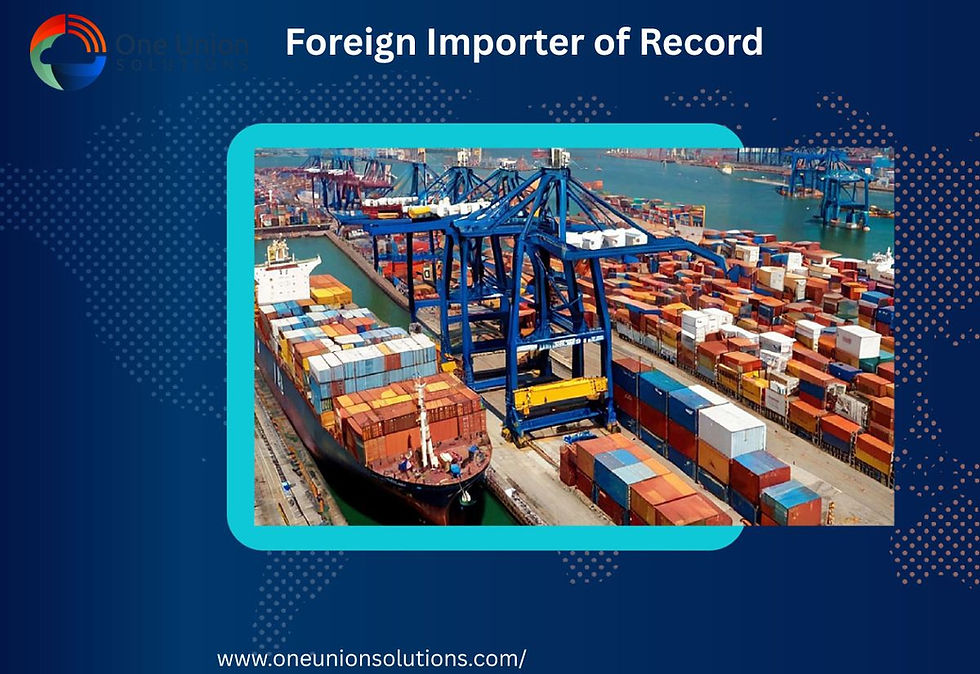Understanding the Automated Export System and Key Shipping Terms
- one uninonsolution
- Aug 1
- 3 min read
In the world of international trade, efficiency and accuracy are crucial. This is where the automated export system (AES) comes into play. The automated export system is an essential platform that streamlines the process of exporting goods from one country to another. By automating various steps in the export process, businesses can save time and reduce human error. Let’s take a closer look at automated export systems, their benefits, and other essential terms you need to know when it comes to global shipping.
What is the Automated Export System (AES)?
The automated export system (AES) is an electronic system that allows exporters to file required documents to the U.S. government. It plays a crucial role in ensuring that all exports comply with the regulatory standards, reducing paperwork and improving speed in processing shipments. The automated export system AES helps exporters keep track of their shipments, and it integrates with other global logistics systems to ensure smooth, efficient international trade.
Why is the Automated Export System Important?
The introduction of automated export systems has made the process of exporting easier and more secure. It automates the filing of export documentation, including the air freight declarations, and allows for faster processing at customs checkpoints. Additionally, it ensures that all customs duties definition and taxes are calculated correctly, avoiding penalties due to errors or missed filings.
Key Shipping Terms You Should Know
Before diving into the complexities of automated export system processes, it’s essential to understand a few shipping terms that come into play in global trade. Here are some of the most common terms:
1. Air Freight Meaning and Definition of Air Freight
Air freight refers to the shipment of goods via air. It’s often the fastest option for transporting goods, especially for international deliveries. The air freight definition covers the cost, methods, and regulations related to sending goods by air. It’s an ideal choice for time-sensitive products that need to be delivered quickly.
2. Bonded Warehousing and Bonded Warehouse Solutions
A bonded warehouse is a facility where imported goods can be stored without paying customs duties until they are ready for distribution. This is especially useful for businesses who need to delay the payment of custom duties definition. Bonded warehousing solutions allow for flexible storage and payment options, enhancing cash flow and improving inventory management.
3. Customs Duties Definition and Custom Duties Definition
Custom duties are taxes imposed on goods when they are imported or exported. These duties vary based on the type of product, the country of origin, and other factors. Understanding custom duties definition and custom duties definition is crucial for businesses involved in international trade, as failure to comply with regulations can result in fines or delays.
4. Delivered at Place (DAP) and Delivery at Place
Delivered at Place (DAP) refers to an Incoterm that indicates the seller’s responsibility for delivering goods to a specific location, usually at the buyer’s destination. The seller is responsible for all costs up until the delivery point, including shipping and custom duties. Once the goods are delivered, the buyer is responsible for unloading and any further costs.
How Does the Automated Export System Work with These Terms?
The automated export system integrates with many aspects of global shipping. For instance, when you file for air freight shipments or bonded warehouse entries, the AES ensures that the necessary paperwork is submitted and processed accurately. It can also ensure compliance with custom duties and DAP delivery requirements, allowing for smoother transactions.
The Bottom Line
In today’s complex global economy, having a reliable automated export system can save businesses time, money, and resources. It allows for smooth integration with shipping methods like air freight and ensures that all documentation, including bonded warehousing and custom duties, is handled efficiently. Whether you are shipping goods under DAP delivery or storing them in a bonded warehouse, understanding these terms is crucial for staying compliant with international trade regulations.
By utilizing modern tools like the automated export system, businesses can streamline their export process, reduce risks, and focus on what matters most – growing their global footprint.



Comments